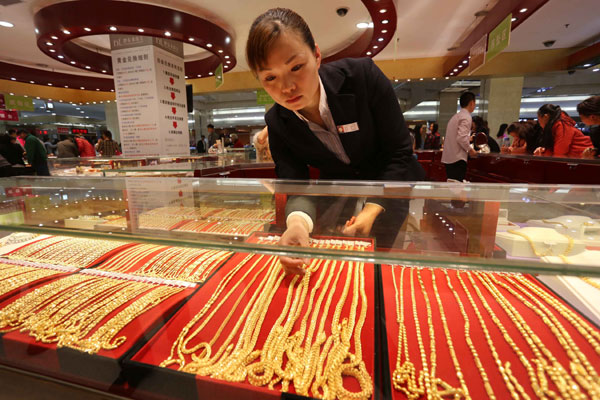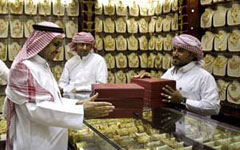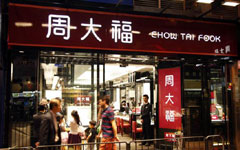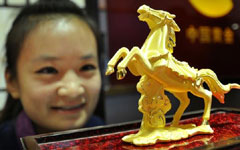 |
|
An assistant arranges jewelry items at a gold shop in Xuchang, Henan province. China's gold demand fell 18 percent in the first quarter of this year, the World Gold Council said. GENG GUOQING/CHINA DAILY |
China's gold demand fell 18 percent in the first quarter as investors bought fewer bars and coins, offsetting record interest in jewelry, the World Gold Council said.
Purchases declined to 263.2 metric tons in the three months ending March from a year earlier, the London-based council said in a report released on Tuesday. While jewelry consumption rose 10 percent, demand for bars and coins sank 55 percent, accounting for about 40 percent of the global decrease.
 |
 |
 |
"During the first quarter, people were taking a wait-and-see attitude as last year they bought quite a lot, and they need time to digest," Albert Cheng, the council's Far East managing director, said at a briefing in Singapore on Tuesday. "Having some gold is still a preferred option in China."
Gold for immediate delivery traded at $1,290.58 an ounce at 2:40 pm in Hong Kong, down from $1,292.97 on Monday, according to Bloomberg generic pricing. Bullion rose 6.9 percent in the quarter through March, while prices on the Shanghai Gold Exchange climbed 8.8 percent.
China's demand for bars and coins dropped to 60 tons in the first quarter from 134.6 tons from a year earlier, while jewelry consumption climbed to 203.2 tons from 185.2 tons, according to the producer-funded council.
"The seasonal impact of the Lunar New Year being closely followed by Valentine's Day, and the strong gold buying and gifting traditions associated with those two occasions drove jewelry consumption to a record first-quarter volume," the council said in the report.
Total Chinese consumption rose 32 percent to a record 1,065.8 tons last year, making up about 28 percent of global usage, according to the council. The nation's jewelry purchases of almost 669 tons in 2013 accounted for 30 percent of the global total, it estimates.
The council said last month that its long-term demand outlook remained intact as China's consumption was expected to expand to at least 1,350 tons by 2017 amid rising wealth.
In Japan, demand jumped fivefold in the first quarter to 8.2 tons as investors stepped up purchases before the nation's consumption tax increased in April, the council said.
